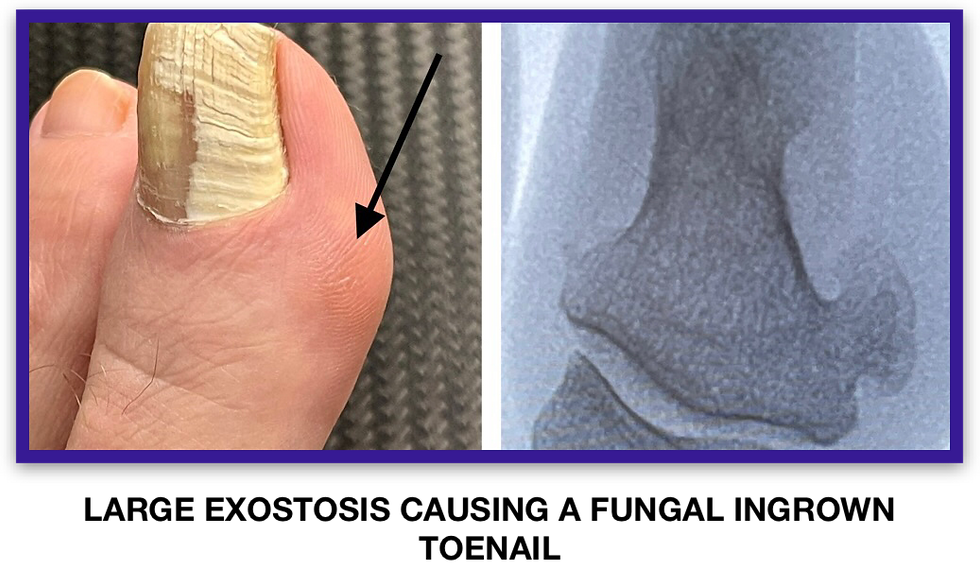“When an Ingrown Toenail is not just an Ingrown Toenail.”
- westendfootankle
- Nov 23, 2021
- 2 min read
Dr. David Weiss, DPM, FACFAS
Almost everyone has had an ingrown toenail at one time or another. However, there is a commonly misdiagnosed condition that makes an ingrown nail considerably more difficult to treat called Subungual Exotosis.
The best way to understand this condition is to see the anatomy of the end of the toe (or finger), and how the nail plate grows…

A normal nail does not grow in straight, as one might imagine. It grows very much like the way a wave comes onto the beach. The cells on the bottom of the nail are “constantly rotating in a forward direction” as it grows out.
NAILS GROW LIKE A WAVE
The nail essentially grows on top of the bone (the distal phalanx). If there is any bone spur or other problem with the structure of the bone, or underlying nail bed, the nail will start to lift up, crack, or even stop growing altogether. It will then become thicker. That’s when it can become ingrown, get nail fungus, and start to hurt and look bad.

It is common for people to form a small bone spur (or exostosis) at the end of the toe, and this will cause a nail to be deformed and ingrown.

Common reasons the bone becomes deformed are: shoes rubbing, trauma, sports that involve the end of the toe to be stressed (running, hiking, some yoga positions, planks, etc), bone or cartilage tumors.
Only Three Treatment Options:
Keep the nail shorter, and use a topical medication to soften the nail and loosen debris under the nail. Wear ½ size larger shoes or open toed shoe.
Remove the toenail permanently. If the nail is removed, and it is allowed to regrow, chances are it will come back to cause the same problem due to the underlying bone spur.
Excise the bone spur, and perform a skin plasty. This will allow the nail to grow in without any underlying spur.
🔹If there is a toenail fungus (onychomycosis) this can be treated with a Laser, Oral Medication, and/or Topical Treatment.
🔹Try and avoid activities that irritate the end of the toes.


As with any foot issue, it is advised to see a professional if you suspect you have an ingrown toenail. It is best to have it treated and to make certain it is not a sign of any other underlying condition.
If you suspect you have an ingrown toenail, please contact our office at 804-346-1779 to make an appointment.











Comments